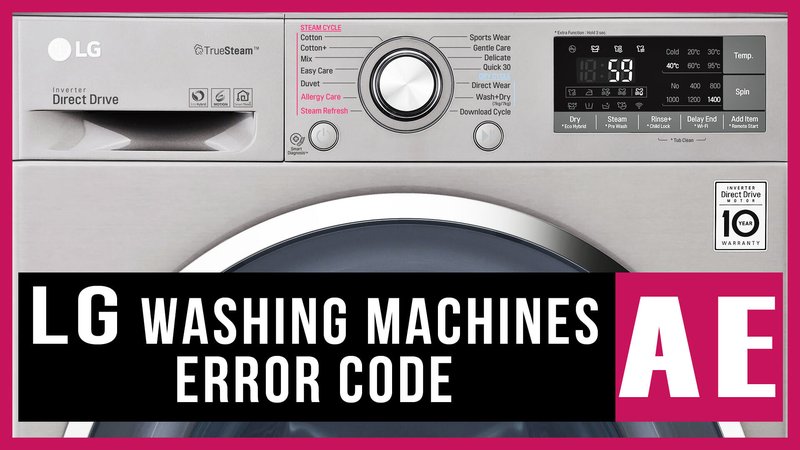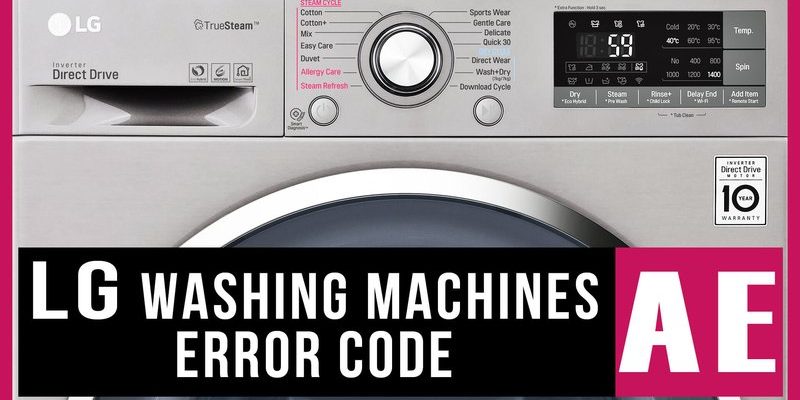
So, what does this E1 error mean? In simple terms, it’s a signal that there’s an issue with water drainage. Imagine your washing machine as a house. The water comes in through the water pipes (inlet valves) and eventually needs to exit through drains. The E1 code is like a tap on the shoulder, telling you something’s blocking that exit. The washing machine is trying to tell you, “Hey, I can’t drain the water properly!” Fortunately, with some basic troubleshooting, you can often resolve this issue on your own.
Understanding the E1 Error Code
The E1 error code is common in LG washing machines. It essentially means there’s a problem with the drainage. Imagine trying to empty a bathtub but the plug is still in place, preventing the water from exiting. This is similar to what’s happening inside your washing machine. If the water can’t drain properly, the machine throws up an E1 code to let you know something’s up.
Now, why does this happen? Often, the culprit is a clogged hose or a blocked drain. Just like a clogged sink, your washing machine might have a blockage in its drainage system. It could be due to lint, fabric softener residue, or even small clothing items that accidentally get pulled into the drain. Think of it like trying to sip a milkshake through a narrow straw – it just doesn’t work well. Similarly, if your washing machine’s drainage system is clogged, it’s going to struggle to remove the water and trigger that E1 code.
Another potential cause could be a kink in the drain hose. If the hose is bent or twisted, like a garden hose with a kink, it restricts the flow of water. This might sound intimidating, but it’s perfectly fixable. Identifying and correcting these issues often resolves the error without needing professional intervention.
How to Troubleshoot the E1 Error Code
Knowing what the E1 code means is only half the battle. The next step is fixing it, which you can often do yourself. First, check the drain hose. Ensure it’s not kinked or bent. If it is, gently straighten it out. This could be enough to get the water flowing properly again. Remember, like unblocking a garden hose, this small adjustment can make a big difference.
Next, it’s time to look for clogs. Disconnect the hose (make sure to have a towel handy for any water spills!) and check for any blockages. Clear any lint or debris that might be obstructing the flow. This process is similar to unclogging a kitchen sink. Sometimes, just a small amount of residue can cause significant drainage problems.
Finally, if these steps don’t solve the problem, you might have a more serious issue with the pump. The pump is like the engine that helps evacuate water from the washing machine. If it fails, water can’t leave the machine properly. In such cases, you might need professional help to either repair or replace the faulty pump.
Preventing Future E1 Errors
Prevention is always better than cure, isn’t it? To avoid running into the E1 code again, make regular maintenance a habit. Think of it like routine checkups for your car – they help spot issues before they become big problems. Start by routinely checking the drain hose for kinks or bends. This can be as simple as a quick glance every time you do laundry.
Cleaning the lint filter regularly also goes a long way. Just like you wouldn’t let dust accumulate on your shelves, don’t allow lint to build up in your washer. With the washing machine, it’s about ensuring a clear and unobstructed pathway for the water to exit.
And here’s one more tip: try not to overload your washing machine. Think of it like carrying too many grocery bags at once – it’s too much for one trip. Overloading can not only affect the performance but also lead to drainage issues. Keep it balanced, give your washing machine the space it needs to operate optimally, and you’ll minimize the chances of seeing that E1 error code again.
By following these simple steps, your LG washing machine will keep running smoothly, and you’ll be spared the headache of unexpected laundry interruptions.
